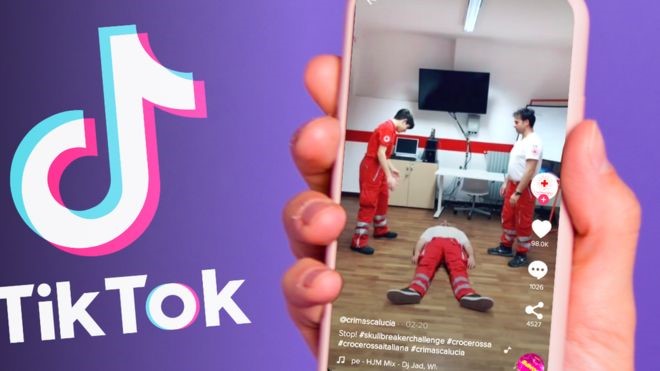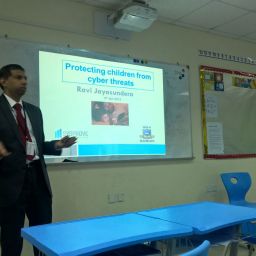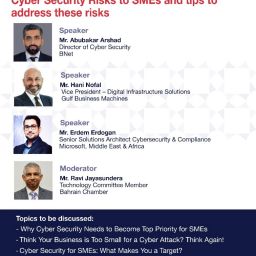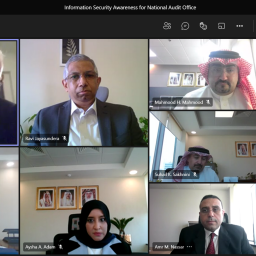Emerging Threats to Kids in the Dynamic Cyber World
As a company, we focus on providing guidance to safeguard organisations from cyber security threats and how to manage the related risks. However, what about cyber safety to us as individuals? The cyber world, being as dynamic as it is, is constantly presenting new threats to us and our children, and we are here to shed some light on some of those current and emerging threats.
Newly Emerging Threats
Dangerous Challenges – It is in our human nature to compete with others and show-off our capabilities, couple that with social media, and the inexperienced teens, and we end up with silly, yet life-threatening, challenges. To name a few:
- Skull breaker challenge (Feb 2020): First started on TikTock, 3 people jump and try to cripple the person jumping in the middle which may “break his skull”.

- Tide pod challenge (Jan 2018): Tide pods are colorful pods that can be used instead of laundry detergent, it is often warned to keep away from their children as they may mistake it for candy. However, adults fully aware of the consequences of consuming chemicals are participating in this challenge, calling them “the forbidden fruit”.

Cyberbullying – Bullying is a human behavior that dates back to our prehistoric ancestors and it has changed in form as humans and civilizations developed (Sherrow, 2011). Bullies now have a new and improved platform to conduct their sinister acts, they can now target their prey from the comfort of their own home and there is no way to escape. Staying out of social media is not an option, due to peer pressure and the further bullying that may result from it. The following are some statistics related to cyber bullying (Bera, 2019):
- 43% of teens have been victims of cyberbullying.
- 53% of teens who have been victims of cyberbullying do not tell their parents about it.
- 96% of teens use social networking applications
Trolling – The difference between a trolling and cyberbullying is that cyberbullying targets an individual while trolling is done at random on public posts that does not belong to an individual person. Trolls post hateful, negative, and off-the-topic comments to grab attention away from the original content. Basically, a social media troll is someone who purposely says something controversial in order to get a rise out of other users.
The effects can be devastating, the following is an extract from an article from The Guardian Newspaper (Savage, 2019):
Health secretary tells social media firms to protect children after girl’s death
 Molly Russell, 14, took her own life in 2017. Her father said he believed social media was partly to blame for her death.
Molly Russell, 14, took her own life in 2017. Her father said he believed social media was partly to blame for her death.
Matt Hancock writes: “It is appalling how easy it still is to access this content online and I am in no doubt about the harm this material can cause, especially for young people. It is time for internet and social media providers to step up and purge this content once and for all.”
Inappropriate Content – Kids are now, more than ever, exposed to inappropriate content which can be overly violent, sexually explicit, or immoral and deceptive. Inappropriate content has always existed in some shape or form, but now with the ease of access provided by the internet and VPN’s, this content is easily reached by minors. This is what the children say (Bera, 2019):
- 17% of children said their parents have no idea what they do online
- 70% of children will encounter pornographic or overly violent content while using the internet for research and homework
- 10% of children admits to visiting adult content sites
- 40% of children say they stop what they’re doing online if a parent is watching
- 67% of children have a negative online experience
- 20% of children wouldn’t tell their parents about a negative online experience
Meeting shady strangers – As the saying goes, stranger danger. Now that the world is more connected than ever, this threat is becoming increasingly more prominent. There are many applications that facilitates the meeting of total strangers such as Omeagle and Perscope. Which makes the internet a home to scammers, con men, blackmailers, thieves, liars, and sexual predators and these platforms allow them to thrive.
Tips for Protection
Get closer to your children
- Encourage children to discuss their cyber security issues
- Discuss with children the action they will take in the event of a compromise of any of their online accounts.
- Appoint a Home IT Manager: Get older siblings or cousins to do research and share safety tips
- Ask your younger siblings /friends/ relatives to make friends with your kids
References
- Abad-Santos, A. (2019, January). Why people are (mostly) joking about eating Tide Pods. Retrieved from Vox: https://www.vox.com/2018/1/4/16841674/tide-pods-eating-meme-tide-pod-challenge
- Bera, A. (2019, May 20). Cyberbullying and Internet Safety for Kids (Infographic). Retrieved from Safe at Last: https://safeatlast.co/blog/kids-online-safety/#gref
- Savage, M. (2019, January 26). Health secretary tells social media firms to protect children after girl’s death. Retrieved from The Guardian: https://www.theguardian.com/politics/2019/jan/26/matt-hancock-facebook-social-media-suicide-self-harm-young-people
- Sherrow, H. (2011, December 15). The Origins of Bullying. Retrieved from https://blogs.scientificamerican.com/guest-blog/the-origins-of-bullying/: https://blogs.scientificamerican.com/guest-blog/the-origins-of-bullying/
- Wakefield, J. (2020, March 4). TikTok skull-breaker challenge danger warning. Retrieved from BBC: https://www.bbc.com/news/technology-51742854













